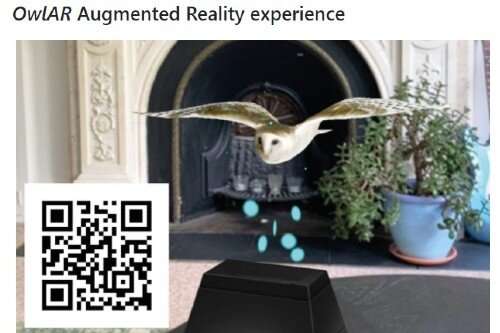Should planes be more like birds?

Would planes be better if they were more like birds? Engineers from the University of Bristol and the Royal Veterinary College have been studying our feathered-friends to answer this very question, the answer to which will be revealed at the Royal Society Summer Science 2021.
The team from the University's Bio-inspired Flight Lab and the Royal Veterinary College have been selected to share their ground-breaking research at the Royal Society Summer Science 2021, which will be held online from this Thursday, 8 July.
Aerospace engineers have long been fascinated by how birds fly and what we can learn about how they adapt to different conditions. In the past year, the team from Bristol and the RVC has made significant discoveries about the way birds' wings and tails move, giving them agility and efficiency - research that could have major implications for future aircraft design.
The team performed a range of experiments using some of nature's most elegant and impressive birds – Lily, a barn owl; Ellie, a goshawk; and Sasha, a tawny eagle. This included creating a bespoke gust generator and wind tunnel for Lily and Sasha to fly through, using high-speed and motion-capture cameras to capture in detail every single feather as it buckled, bent and moved throughout their flight.
In another experiment they filled the lab with soap bubbles containing a little added helium so they hung in the air. As the birds glided through this cloud of bubbles, they stirred them, allowing the team to understand how birds use their tails in a different – and more efficient – way to aeroplanes.
To really bring their research to life at the virtual exhibition, the team has developed a range of online content. This includes an interactive game, It's a breeze, and an augmented reality app, OwlAR, that will allow users to recreate the team's wind gust experiment by using a mobile device to fly Lily the barn owl around their own living room, local park - or anywhere else they happen to be!
The research behind this fun and interactive content is significant because it begins to solve two of the major problems facing aerial vehicles – smoothness of flight and fuel economy.
"Future aircraft and aerial robots may operate in very different ways from current technologies. By studying bird flight we can get inspiration for new ways of solving challenges such as saving energy and dealing with gusty wind conditions."
"It's been amazing working with the RVC to study how birds are adapted to fly so efficiently and robustly," said Dr Shane Windsor, Senior Lecturer in Aerodynamics in Bristol's Department of Aerospace Engineering.
"We try to understand the natural world from an engineering perspective, then flip it around to use our biological knowledge to improve engineering design. It has been a privilege to exhibit our work on the engineering applications of bird flight at the Royal Society Summer Science event.
"Our virtual visitors can see how observing birds of prey has helped us to develop hinged-wing aircraft for a smoother ride, and reduce the drag of future small aircraft with bird-like tails. On top of that, we have brought a slice of science directly to you; why not recreate our experiments by flying our favourite barn owl, Lily, around your very own home using our augmented reality experience, OwlAR?
"The all-digital format this year has been a fun challenge and a great way to communicate our scientific research to the world - we hope we have made engaging interactive content with an enduring appeal," said Professor Richard Bomphrey, Interim Vice Principal for Research; Professor of Comparative Biomechanics at the Royal Veterinary College.
"It has been tremendous fun curating our research for the public via the Royal Society. We aim to get everyone thinking (and dreaming!) about the future of aircraft and to inspire the scientists of tomorrow," said Jonathan Stevenson, PhD, Research Associate in Bird-inspired Aerodynamics from Bristol's Department of Aerospace Engineering.
More information: Summer Science 2021: Eagle inspired engineering




















